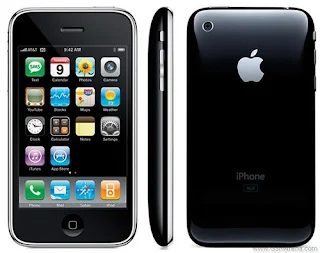Evolution of Excellence: A Journey Through Apple iPhone History and a Close Look at iPhone 8 to iPhone 15 Pro Max
*Introduction*
The Apple iPhone, a technological marvel that has reshaped the way we communicate, work, and play, has come a long way since its inception. In this blog post, we'll embark on a captivating journey through the history of the iPhone, from its humble beginnings to the latest powerhouse, the iPhone 15 Pro Max. We'll also delve into the pros and cons of each model along the way.
**A Brief History of the iPhone**
The iPhone, introduced by Apple Inc. in 2007, marked a revolution in the world of smartphones. Here's a glimpse of its history:
* iPhone (2007): The original iPhone featured a revolutionary touchscreen interface and set the standard for modern smartphones. Its impact was profound, blending phone, iPod, and internet communication into one sleek device.
* iPhone 3G (2008): With 3G connectivity and the App Store's debut, the iPhone 3G expanded the device's capabilities and solidified Apple's dominance in the smartphone market.
* iPhone 4 (2010): The iPhone 4 introduced the Retina display and a sleek, glass-backed design. It also featured FaceTime, Apple's video-calling innovation.
* iPhone 6 and 6 Plus (2014): These larger iPhones with Retina HD displays were a hit, catering to users who craved bigger screens.
* iPhone X (2017): The iPhone X marked the 10th-anniversary celebration and introduced the edge-to-edge Super Retina OLED display, Face ID, and an all-glass design.
**iPhone 8 to iPhone 15 Pro Max: A Journey of Evolution**
Now, let's take a closer look at the iPhone models from iPhone 8 to iPhone 15 Pro Max, highlighting their pros and cons.
**iPhone 8 (2017)**
*Pros:*
- Excellent camera performance
- Wireless charging support
- Compact design
- Fast performance
*Cons:*
- Design similar to previous models
- Smaller screen compared to Plus-sized models
**iPhone X (2017)**
*Pros:*
- Stunning OLED Super Retina display
- Face ID for enhanced security
- Animoji and AR capabilities
- Dual-camera system
*Cons:*
- High price tag
- Fragile glass back
**iPhone 11 Pro Max (2019)**
*Pros:*
- Triple-camera system with exceptional photography capabilities
- Superb OLED display
- Impressive A13 Bionic chip
- Long battery life
*Cons:*
- Hefty price point
- Similar design to previous models
**iPhone 12 Pro Max (2020)**
*Pros:*
- 5G connectivity for faster data speeds
- Ceramic Shield for improved durability
- Powerful A14 Bionic chip
- Enhanced camera system with LiDAR
*Cons:*
- Slightly heavier and bulkier
- No charger or earphones in the box
**iPhone 13 Pro Max (2021)**
*Pros:*
- Improved A15 Bionic chip
- Super Retina XDR display with ProMotion technology
- Enhanced low-light camera performance
- Longer battery life
*Cons:*
- Incremental design changes
- High price point
**iPhone 15 Pro Max (Expected 2022)**
*Expected Pros:*
- Cutting-edge A16 Bionic chip
- Advanced camera enhancements
- 120Hz ProMotion display
- Potential design innovations
*Expected Cons:*
- High price (anticipated)
- Incremental upgrades (anticipated)
**Conclusion**
The Apple iPhone has undergone remarkable evolution, from its groundbreaking introduction in 2007 to the expected iPhone 15 Pro Max in 2022. Each model has brought new features, enhanced performance, and refined designs. While each iPhone has its pros and cons, Apple's commitment to innovation and excellence continues to shape the smartphone industry, making the iPhone a symbol of technological advancement and user satisfaction.

.jpeg)




Comments
Post a Comment